In today’s fast-paced world, technology permeates every aspect of our lives, shaping how we communicate, work, and even think. Welcome to our Technology Moment, where we delve into the dynamic landscape of innovation and exploration.
So, join us on this journey through the technology landscape, where we’ll explore the latest trends, dive deep into emerging technologies, and ponder the profound implications they hold for society. Together, let’s embrace the future and navigate this exciting Technology Moment with curiosity, optimism, and a commitment to making the world a better place through innovation.
What is Cyber security?
Cybersecurity refers to the practices, technologies, and processes designed to protect computers, networks, and data from unauthorized access, attacks, damage, or theft. It encompasses a wide range of activities, including securing information systems, preventing cyber attacks, and responding to breaches when they occur. The goal of cybersecurity is to ensure the confidentiality, integrity, and availability of information.
Confidentiality means ensuring that data is only accessible to those who have the right to see it. Integrity involves maintaining the accuracy and completeness of data and ensuring it isn’t altered or tampered with by unauthorized users. Availability ensures that authorized users have reliable access to information and resources when they need them.
Importance of Cyber security
The importance of cybersecurity cannot be overstated; it’s essential for several reasons:
- Protecting Personal Information: In the digital age, personal information, such as social security numbers, credit card details, and medical records, are stored online. Cybersecurity measures help protect this sensitive data from being accessed and misused by unauthorized individuals.
- Ensuring Business Continuity: For businesses, a cyber attack can lead to significant financial losses, reputational damage, and operational disruptions. Effective cybersecurity practices help ensure that businesses can operate smoothly without interruptions caused by cyber threats.
- Maintaining National Security: Cybersecurity is also crucial for protecting national security. Governments and military organizations rely on secure communication networks to protect sensitive information and ensure the safety of the public. Cyber attacks on critical infrastructure, such as power grids and financial systems, can have severe consequences.
- Preventing Financial Loss: Cybercrime can result in substantial financial losses for individuals and organizations. From identity theft to corporate espionage, the financial impact of cyber attacks can be devastating.
- Building Trust and Reputation: For businesses, maintaining customer trust is paramount. Companies that prioritize cybersecurity build stronger relationships with their customers and enhance their reputation in the market.
- Compliance with Regulations: Many industries are subject to strict regulations that mandate specific cybersecurity practices. Compliance with these regulations is not only a legal requirement but also a best practice for ensuring the security of sensitive data.
Table of Contents
The Evolution of Cybersecurity
Early Days of Cyber security
In the early days of computing, cybersecurity was a relatively straightforward affair. The primary focus was on physical security, ensuring that unauthorized individuals couldn’t physically access computers or sensitive information stored on floppy disks and early hard drives. Passwords were used to prevent unauthorized access, and basic antivirus programs were developed to counteract the first computer viruses, which were often spread through infected floppy disks or simple networks.
Early cybersecurity measures were reactive rather than proactive. Security breaches were infrequent and typically resulted from either human error or relatively simple attacks. As such, the primary tools in the cybersecurity arsenal were firewalls and antivirus software. Firewalls were used to block unauthorized access to networks, while antivirus programs identified and removed malicious software.
Modern Cyber security Threats
As the internet began to take shape in the late 20th century, the nature of cybersecurity threats changed dramatically. The connectivity of networks expanded, making it easier for hackers to access systems from anywhere in the world. This led to the development of more sophisticated and varied cyber threats, such as worms, trojans, and ransomware.
- Worms and Trojans: Unlike early viruses that required human action to spread, worms could propagate themselves across networks automatically. Trojans disguised themselves as legitimate software, tricking users into downloading and installing them.
- Phishing Attacks: Phishing emerged as a common attack vector, where attackers used deceptive emails and websites to trick individuals into revealing personal information such as usernames, passwords, and credit card numbers.
- Ransomware: This type of malware encrypts a user’s data and demands a ransom to restore access. The infamous WannaCry attack in 2017 demonstrated how ransomware could cause widespread disruption.
- Denial-of-Service (DoS) Attacks: Attackers flood a target with excessive traffic, rendering it unable to function properly. Distributed Denial-of-Service (DDoS) attacks, using multiple compromised systems, became a significant threat.
- Advanced Persistent Threats (APTs): These are protracted, focused intrusions in which a hacker penetrates a network and stays hidden for a considerable amount of time, frequently with the intention of stealing data.
Advancements in Cyber security Technologies
To counter these evolving threats, cybersecurity technologies have had to advance significantly:
- Intrusion Detection Systems (IDS) and Intrusion Prevention Systems (IPS): These systems monitor network traffic for suspicious activity and can take action to block potential threats in real-time.
- Encryption: Encryption technologies protect data both in transit and at rest, making it unreadable to unauthorized users.
- Multi-Factor Authentication (MFA): MFA requires users to provide multiple forms of identification before gaining access to a system, adding an additional layer of security beyond just a password.
- Artificial Intelligence (AI) and Machine Learning (ML): These technologies are increasingly used for threat detection and predictive analysis, identifying potential threats based on patterns and behaviors.
Cybersecurity Frameworks and Regulations
As the cybersecurity landscape evolved, so too did the need for structured frameworks and regulations to ensure organizations adhere to best practices and legal requirements. Examples include:
- NIST Cybersecurity Framework: Developed by the National Institute of Standards and Technology, this framework provides guidelines for managing and reducing cybersecurity risk.
- General Data Protection Regulation (GDPR): This EU regulation mandates data protection and privacy for individuals, significantly impacting how organizations handle personal data.
- Health Insurance Portability and Accountability Act (HIPAA): In the U.S., HIPAA sets standards for protecting sensitive patient data in the healthcare sector.
The Human Element
Despite technological advancements, human error remains a significant factor in cybersecurity breaches. Social engineering attacks, such as phishing, exploit human vulnerabilities rather than technical weaknesses. This has led to increased emphasis on cybersecurity training and awareness programs to educate individuals about potential threats and safe practices.
Looking Ahead
The future of cybersecurity promises further advancements as both threats and defenses continue to evolve. Innovations such as quantum computing and blockchain technology are expected to play roles in enhancing cybersecurity. However, the dynamic nature of cyber threats means that staying ahead will always be a challenging and ongoing task.
Types of Cyber security Threats
Cybersecurity threats are diverse and continually evolving. Understanding these threats is crucial for developing effective defense strategies. Here’s a detailed look at the most common types of cybersecurity threats:
Malware
There are various types of malware, including viruses, worms, Trojans, spyware, and adware. Each type operates differently but shares the common goal of compromising the target’s system.
- Viruses: These attach themselves to legitimate programs and spread when the infected program is executed.
- Worms: Unlike viruses, worms can self-replicate and spread independently across networks.
- Trojans: These masquerade as legitimate software to deceive users into installing them, often creating backdoors for other malware.
- Spyware: This type secretly monitors user activity and collects personal information.
- Adware: Typically less harmful, adware displays unwanted advertisements and can track user behavior.
Phishing Attacks
Phishing is a social engineering attack where attackers impersonate trustworthy entities to trick individuals into providing sensitive information, such as login credentials and credit card numbers. These attacks often come in the form of deceptive emails or messages that appear legitimate, urging recipients to click on malicious links or download harmful attachments.
- Spear Phishing: A more targeted form of phishing where attackers tailor their messages to specific individuals or organizations.
- Whaling: A type of spear phishing that targets high-profile individuals like executives or celebrities.
Ransomware
This threat has become increasingly prevalent and can have devastating effects on individuals and organizations. The attackers typically request payment in cryptocurrencies, making it difficult to trace.
- Crypto Ransomware: Encrypts files and demands payment for the decryption key.
- Locker Ransomware: Locks the user out of their device entirely, demanding a ransom for access restoration.
Denial-of-Service (DoS) Attacks
A Denial-of-Service (DoS) attack aims to make a network or service unavailable to its intended users by overwhelming it with a flood of illegitimate requests.
- Distributed Denial-of-Service (DDoS): An amplified version of DoS, where multiple compromised systems (often part of a botnet) are used to launch the attack, making it more difficult to mitigate.
Man-in-the-Middle (MitM) Attacks
In a Man-in-the-Middle (MitM) attack, the attacker secretly intercepts and relays messages between two parties who believe they are communicating directly with each other.
- Eavesdropping: Intercepting communication between two parties to gather sensitive information.
- Session Hijacking: Taking over a user’s session after they have successfully authenticated, enabling the attacker to perform actions as the user.
Key Components of Cybersecurity
When we talk about cybersecurity, we’re looking at a broad field that encompasses various aspects of protecting digital infrastructure. Understanding the key components of cybersecurity is crucial for building a robust defense strategy. Let’s dive into the main areas:

Network Security
Network security focuses on protecting the integrity, confidentiality, and availability of data as it is transmitted across or within a network. This involves implementing policies and practices to prevent unauthorized access, misuse, or modification of network resources. Key measures include:
- Firewalls: Act as barriers between trusted and untrusted networks, monitoring and controlling incoming and outgoing network traffic based on predetermined security rules.
- Intrusion Detection Systems (IDS): These systems monitor network traffic for suspicious activity and known threats, providing alerts for potential incidents.
- Virtual Private Networks (VPNs): VPNs encrypt internet connections, ensuring that data transmitted between a user’s device and the network remains secure and private.
Information Security
Information security, often referred to as InfoSec, is about protecting information from unauthorized access, disclosure, alteration, and destruction. It’s focused on safeguarding the data itself, regardless of where it resides. Key aspects include:
- Data Encryption: Transforming readable data into an encoded format that can only be decoded by authorized parties.
- Access Controls: Implementing measures to ensure that only authorized users can access certain data. This can include user permissions, role-based access, and multi-factor authentication (MFA).
- Data Loss Prevention (DLP): Systems and procedures that identify and stop illegal access, data exfiltration, and breaches.
Endpoint Security
Endpoints are individual devices like computers, mobile phones, tablets, and other devices that connect to the network. Endpoint security involves securing these devices from cyber threats. Key components include:
- Antivirus and Anti-malware: programs made to identify, stop, and get rid of malicious programs.
- Endpoint Detection and Response (EDR): Solutions that continuously monitor and respond to threats on endpoints, providing real-time visibility and automated response capabilities.
- Patch Management: Ensuring that all devices are up-to-date with the latest security patches and software updates to close vulnerabilities.
Cloud Security
With the increasing adoption of cloud services, securing cloud environments has become a vital part of cybersecurity. Cloud security involves protecting data, applications, and services in the cloud from cyber threats. Key components include:
- Identity and Access Management (IAM): Ensuring that the right individuals and job roles within an organization have access to the tools they need.
- Security Information and Event Management (SIEM): Collecting and analyzing security data from cloud environments to detect and respond to threats.
- Encryption: Using encryption technologies to protect data stored and transmitted within cloud services.
- Compliance Management: Ensuring that cloud environments comply with relevant regulations and standards, such as GDPR, HIPAA, and others.
Cybersecurity Best Practices
Ensuring robust cybersecurity is a multifaceted endeavor that involves a combination of technology, processes, and human awareness. Here are the best practices that individuals and organizations should adopt to protect against cyber threats:
Regular Software Updates
Software developers frequently release updates that patch security vulnerabilities and fix bugs. By regularly updating operating systems, applications, and firmware, you close potential entry points for cyber attackers.
- Automate Updates: Enable automatic updates where possible to ensure you always have the latest security patches.
- Update All Devices: This includes computers, smartphones, tablets, and any other internet-connected devices.
Strong Password Policies
Weak passwords are easily guessable, making it crucial to implement strong password policies.
- Complex Passwords: Use a combination of letters (both upper and lower case), numbers, and special characters.
- Unique Passwords: Use different passwords for different accounts to prevent a single breach from compromising multiple accounts.
- Password Managers: Utilize password managers to securely store and generate complex passwords, reducing the burden of remembering them.
Use of Antivirus and Anti-malware
Antivirus and anti-malware software are essential tools for protecting against malicious software that can compromise your system.
- Real-Time Protection: Enable real-time protection to monitor for threats as they arise.
- Keep Definitions Updated: Ensure that the software’s virus definitions are always up to date to recognize the latest threats.
Employee Training and Awareness
Educating employees about the risks and how to recognize threats can significantly enhance your cybersecurity posture.
- Phishing Awareness: Train employees to recognize phishing emails and suspicious links.
- Secure Practices: Teach best practices for secure browsing, data handling, and communication.
- Regular Training: Conduct regular training sessions and refreshers to keep cybersecurity knowledge up to date.
Network Security Measures
Securing your network is fundamental to protecting your digital assets from unauthorized access and attacks.
- Firewalls: Install firewalls to keep an eye on and regulate network traffic entering and leaving the system according to predefined security criteria.
- Virtual Private Networks (VPNs): Use VPNs to encrypt internet connections, especially when accessing the network remotely.
- Segment Networks: Divide your network into segments to contain potential breaches and prevent lateral movement by attackers.
Implement Multi-Factor Authentication (MFA)
Multi-Factor Authentication (MFA) adds an extra layer of security by requiring two or more verification methods to gain access to an account.
- Something You Know: Password or PIN.
- Something You Have: A smartphone or security token.
- Something You Are: Biometric verification such as fingerprints or facial recognition.
Data Encryption
Encryption protects sensitive data by converting it into a code that can only be accessed with a decryption key.
- Encrypt Sensitive Data: Apply encryption to sensitive data both at rest (stored data) and in transit (data being transferred over the internet).
- Use Strong Encryption Protocols: Ensure that you are using up-to-date and strong encryption algorithms and protocols.
Regular Backups
Backups are a critical component of a comprehensive cybersecurity strategy, ensuring that you can recover your data in the event of a breach or data loss.
- Frequent Backups: Regularly back up all critical data.
- Offsite Storage: Store backups in a secure, offsite location or use cloud services with strong security measures.
- Test Restores: Regularly test your backup restore process to ensure data can be recovered quickly and completely.
Secure Configuration
Secure configuration involves setting up systems and devices to minimize vulnerabilities.
- Disable Unnecessary Features: Turn off features and services that are not needed to reduce potential attack vectors.
- Default Settings: Avoid using default settings, especially default passwords, as they are commonly known to attackers.
- Harden Systems: Implement security baselines and hardening guides to ensure systems are configured securely.
Incident Response Plan
An incident response plan outlines the steps to take in the event of a cybersecurity incident, ensuring a structured and efficient response.
- Preparation: Identify potential threats and vulnerabilities.
- Detection and Analysis: Establish methods for detecting incidents and analyzing their impact.
- Containment, Eradication, and Recovery: Define actions to contain the breach, eradicate the threat, and recover from the incident.
- Post-Incident Review: Review and analyze the incident to improve future response and prevent recurrence.
Cybersecurity Tools and Technologies
In the fight against cyber threats, a variety of tools and technologies are employed to safeguard information and systems. Understanding these tools is essential for building a robust cybersecurity strategy. Here’s a detailed look at some of the key tools and technologies used in cybersecurity:
Firewalls
Firewalls act as the first line of defense in a network security system. Firewalls can be hardware-based, software-based, or a combination of both.
Types of Firewalls:
- Packet-Filtering Firewalls: Analyze packets in isolation and block or allow them based on source and destination IP addresses, protocols, or ports.
- Stateful Inspection Firewalls: Keep track of the state of active connections and make decisions based on the context of the traffic.
- Proxy Firewalls: By intercepting every communication coming into and going out of the network, you may successfully conceal the real network addresses.
- Next-Generation Firewalls (NGFW): Combine traditional firewall technology with additional features like encrypted traffic inspection, intrusion prevention systems, and application awareness.
Intrusion Detection Systems (IDS)
IDS are designed to detect unauthorized access or attacks on a network. They monitor network traffic for suspicious activity and send alerts to administrators.
Types of IDS:
- Network-Based IDS (NIDS): Monitor network traffic for multiple devices.
- Host-Based IDS (HIDS): Monitor traffic for a single device or host.
- Signature-Based IDS: Compare network traffic to a database of known attack patterns or signatures.
- Anomaly-Based IDS: Establish a baseline of normal activity and flag deviations from this norm.
Encryption
It is a critical tool for protecting sensitive information, both at rest and in transit.
Types of Encryption:
- Symmetric Encryption: Uses the same key for both encryption and decryption. Examples include AES (Advanced Encryption Standard).
- Asymmetric Encryption: Examples include RSA (Rivest-Shamir-Adleman).
- Hashing: Generates a unique fixed-size string from input data, ensuring data integrity by detecting changes.
Multi-Factor Authentication (MFA)
By requiring several kinds of verification before allowing access to a system, MFA adds an extra layer of protection. Usually, this consists of the user’s knowledge (password), possession (security token), and identity (biometric verification).
Common MFA Methods:
- SMS-based MFA: Sends a verification code to the user’s mobile device.
- Authenticator Apps: Generate time-based one-time passwords (TOTPs).
- Biometrics: Uses fingerprints, facial recognition, or iris scans for authentication.
- Hardware Tokens: Physical devices that generate a verification code.
Additional Cybersecurity Tools and Technologies
Antivirus and Anti-Malware Software
These programs detect, prevent, and remove malicious software. They use signature-based detection to identify known threats and heuristic-based detection to find new, unknown malware by analyzing behaviors and characteristics.
Virtual Private Networks (VPNs)
VPNs create a secure connection over the internet, encrypting data transmitted between the user’s device and the network. This ensures that sensitive information is protected from eavesdropping and interception.
Security Information and Event Management (SIEM)
They provide real-time analysis of security alerts generated by applications and network hardware, helping organizations to detect and respond to incidents quickly.
Endpoint Detection and Response (EDR)
They provide visibility into activities on endpoints, allowing for quick identification and remediation of security incidents.
Data Loss Prevention (DLP)
DLP tools prevent sensitive data from being lost, misused, or accessed by unauthorized users. They monitor and control data transfers and can block or encrypt sensitive information before it leaves the network.
The Role of Artificial Intelligence in Cybersecurity
Artificial Intelligence (AI) is transforming various sectors, and cybersecurity is no exception. AI’s role in cybersecurity is multifaceted, offering powerful tools and solutions to detect, prevent, and respond to cyber threats with greater efficiency and accuracy. Let’s delve deeper into how AI is reshaping cybersecurity.
AI in Threat Detection
Traditional threat detection methods often rely on predefined rules and signatures to identify malicious activities. While effective to some extent, these methods can struggle with detecting new, unknown threats or adapting to evolving attack vectors.
AI, particularly through machine learning algorithms, can analyze vast amounts of data to identify patterns and anomalies indicative of cyber threats. These algorithms can learn from historical data, recognizing both known and novel threats. For instance, AI systems can detect unusual network traffic, deviations in user behavior, or irregularities in system operations, signaling a potential security breach.
Machine Learning for Predictive Analysis
Machine learning, a subset of AI, is especially valuable for predictive analysis in cybersecurity. By analyzing historical data, machine learning models can predict potential future attacks and vulnerabilities.
For example, machine learning models can predict which vulnerabilities are most likely to be exploited by cybercriminals, enabling security teams to prioritize patching and remediation efforts. Additionally, predictive analytics can help identify which assets are most at risk, allowing for targeted security measures.
AI-Powered Automation
AI also plays a crucial role in automating various cybersecurity tasks, which can significantly improve response times and reduce the workload on human security professionals. Automation can handle routine tasks such as monitoring network traffic, scanning for vulnerabilities, and even responding to low-level threats without human intervention.
For instance, AI-driven security information and event management (SIEM) systems can automatically correlate and analyze security events from multiple sources, providing real-time alerts and recommendations. Automated incident response systems can quickly isolate compromised devices, block malicious traffic, and initiate predefined response protocols, minimizing the impact of an attack.
Enhanced Incident Response
In the event of a cyber incident, AI can streamline and enhance the incident response process. AI-powered tools can quickly analyze the scope and nature of the attack, identify affected systems, and suggest remediation steps. This rapid analysis helps security teams respond more effectively and reduce the dwell time of attackers within the network.
Moreover, AI can assist in forensic investigations by analyzing logs, network traffic, and other data to reconstruct the attack timeline and identify the attack vectors used. This detailed insight is crucial for understanding the attack and preventing future incidents.
Continuous Learning and Adaptation
One of the standout features of AI in cybersecurity is its ability to continuously learn and adapt. As cyber threats evolve, so too do AI algorithms. Machine learning models can be updated with new data, ensuring they remain effective against the latest threats. This continuous learning capability allows AI to stay ahead of cybercriminals who are constantly developing new tactics and techniques.
AI in Phishing Detection
AI can significantly improve phishing detection by analyzing emails for suspicious content, sender reputation, and anomalous behavior. Natural language processing (NLP) techniques can be used to analyze the language and context of emails, identifying subtle cues that may indicate a phishing attempt.
AI-powered email security solutions can block or flag potentially harmful emails before they reach the user, reducing the risk of successful phishing attacks.
Challenges and Considerations
While AI offers substantial benefits for cybersecurity, it is not without challenges. One concern is the potential for false positives, where legitimate activities are incorrectly flagged as threats. This can lead to alert fatigue among security teams, reducing the overall effectiveness of threat detection efforts.
Additionally, cybercriminals can also leverage AI to enhance their attacks, creating more sophisticated and harder-to-detect threats. As such, the cybersecurity industry must continually innovate and adapt AI technologies to stay ahead of malicious actors.
Cybersecurity in Different Industries
Cybersecurity is not a one-size-fits-all discipline; different industries face unique threats and have specific security needs. Let’s delve into how cybersecurity plays a crucial role in various sectors:
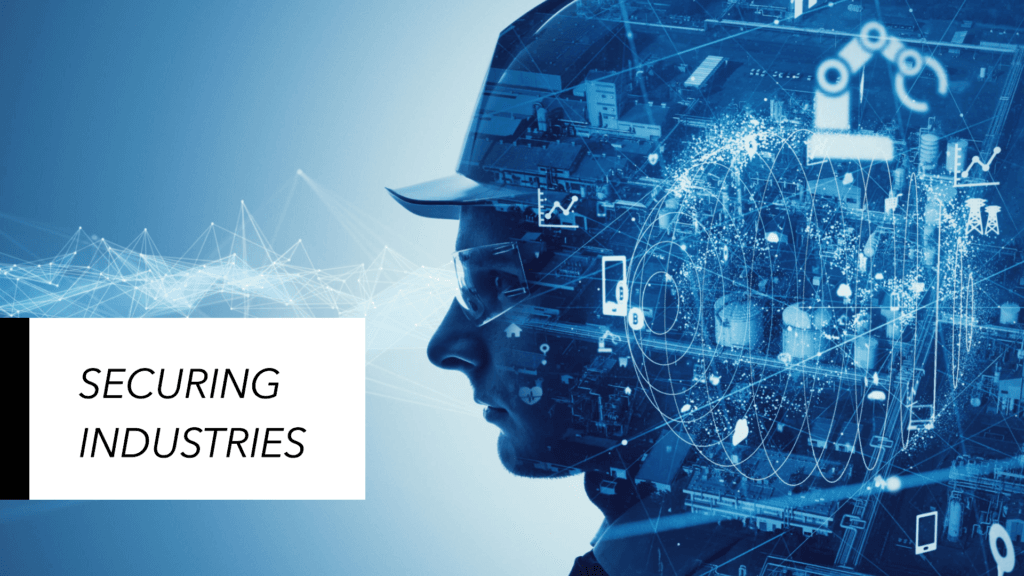
Financial Sector
The financial industry is a prime target for cybercriminals due to the sensitive nature of the data it handles, including personal information and financial transactions. Key cybersecurity challenges in this sector include:
- Phishing Attacks: Cybercriminals often use phishing schemes to gain access to banking credentials and personal data.
- Ransomware: Financial institutions are frequent targets of ransomware attacks, where attackers encrypt data and demand a ransom for its release.
- Data Breaches: Protecting customer information from unauthorized access is a top priority to prevent identity theft and financial fraud.
Financial institutions employ robust security measures such as encryption, multi-factor authentication (MFA), and continuous monitoring to safeguard their systems and data.
Healthcare
Healthcare organizations hold vast amounts of sensitive patient data, making them attractive targets for cyberattacks. The main cybersecurity concerns in this industry include:
- Patient Data Security: Protecting electronic health records (EHRs) from breaches is critical to maintaining patient confidentiality.
- Ransomware: Hospitals and clinics often face ransomware attacks that can disrupt services and put patient safety at risk.
- Compliance Requirements: Healthcare providers must adhere to strict regulations like HIPAA (Health Insurance Portability and Accountability Act) to ensure data privacy and security.
To combat these threats, healthcare organizations implement comprehensive security protocols, including regular software updates, employee training, and advanced threat detection systems.
Retail
The retail industry, especially e-commerce, relies heavily on digital transactions, making it a frequent target for cybercriminals. Key cybersecurity issues include:
- Payment Card Fraud: Retailers must protect payment card information from being stolen during transactions.
- Phishing and Social Engineering: Cybercriminals use these techniques to trick employees and customers into revealing sensitive information.
- Data Breaches: Hackers target retailers to gain access to customer databases, leading to significant financial and reputational damage.
Retailers use encryption, secure payment gateways, and fraud detection systems to protect their digital infrastructure and customer data.
Government
Government agencies store and manage a wide range of sensitive information, from personal citizen data to classified national security information. Key cybersecurity challenges include:
- Nation-State Attacks: Government systems are often targets for cyber-espionage and attacks from other nations.
- Data Breaches: Unauthorized access to government databases can lead to the exposure of sensitive information.
- Critical Infrastructure Protection: Ensuring the security of essential services such as power grids, water supplies, and transportation systems is crucial.
Governments invest in robust cybersecurity measures, including stringent access controls, regular security audits, and collaboration with private sector experts to protect their infrastructure and data.
The Human Factor in Cybersecurity
When it comes to cybersecurity, technology often takes center stage. However, one crucial aspect that can’t be overlooked is the human factor. Despite advanced security systems and protocols, human errors and behaviors often serve as significant vulnerabilities. Let’s delve into how humans impact cybersecurity, focusing on social engineering attacks and insider threats.
Social Engineering Attacks
Social engineering is a tactic that manipulates individuals into divulging confidential information, performing actions, or granting access to secure systems.
- Phishing: Phishing is the most prevalent form of social engineering. Attackers send deceptive emails or messages that appear to be from trusted sources, enticing recipients to click on malicious links or provide sensitive information. These emails often mimic legitimate organizations, creating a sense of urgency or fear to prompt immediate action.
- Spear Phishing: A more targeted form of phishing, spear phishing involves personalized attacks aimed at specific individuals or organizations. Attackers gather information about their targets to craft convincing messages that increase the likelihood of success.
- Baiting: In baiting attacks, attackers lure victims with promises of something enticing, such as free software or an irresistible deal. When victims take the bait, they inadvertently download malware or reveal their credentials.
- Pretexting: Pretexting involves creating a fabricated scenario to persuade the victim to disclose information or perform actions that they wouldn’t normally do. Attackers often impersonate authority figures or trusted individuals to establish credibility.
Insider Threats
Insider threats come from within the organization, making them particularly challenging to detect and mitigate. These threats can be either malicious or unintentional, but both can cause significant damage. Here’s how insider threats manifest:
- Malicious Insiders: These are individuals within an organization who intentionally misuse their access to compromise systems, steal data, or disrupt operations. Malicious insiders often have in-depth knowledge of the organization’s security measures, making their actions harder to detect.
- Unintentional Insiders: These are employees or associates who, without malicious intent, cause security breaches through negligence, errors, or ignorance. For example, an employee might accidentally send sensitive information to the wrong recipient, click on a phishing link, or fail to follow security protocols.
Mitigating the Human Factor in Cybersecurity
Given the significant role humans play in cybersecurity, addressing the human factor is essential. Here are some strategies to mitigate risks associated with human behavior:
- Education and Training: Regular, comprehensive cybersecurity training is crucial for all employees. Training should cover recognizing phishing attempts, the importance of strong passwords, and safe online practices. Interactive simulations and drills can help reinforce learning and prepare employees for real-world scenarios.
- Robust Policies and Procedures: Implementing clear cybersecurity policies and procedures helps set expectations and provides guidelines for safe behavior. Policies should be easily accessible and regularly updated to reflect the latest threats and best practices.
- Access Controls and Monitoring: Limiting access to sensitive information and systems based on roles and responsibilities can reduce the risk of insider threats. Continuous monitoring and auditing of user activities can help detect and respond to suspicious behavior promptly.
- Encouraging a Security-Conscious Culture: Fostering a culture where cybersecurity is a shared responsibility can have a profound impact. Encouraging employees to report suspicious activities without fear of repercussions and rewarding proactive security behaviors can enhance overall security posture.
The Future of Cybersecurity
As technology advances at an exponential rate, the future of cybersecurity is both promising and challenging. Emerging technologies like artificial intelligence (AI), quantum computing, and the Internet of Things (IoT) are reshaping the digital landscape, presenting new opportunities and threats alike.
Emerging Threats
One of the key aspects of the future of cybersecurity is the emergence of new threats. As hackers become more sophisticated and cybercriminals adapt to evolving technologies, traditional cybersecurity measures may become insufficient. Emerging threats such as AI-driven cyber attacks, quantum hacking, and attacks on IoT devices pose significant challenges to cybersecurity professionals.
Innovations in Cyber Defense
To counter these emerging threats, innovations in cyber defense are essential. Cybersecurity professionals are leveraging advanced technologies like AI and machine learning to develop proactive threat detection and response systems. These systems can analyze vast amounts of data in real-time, identify patterns indicative of cyber threats, and take autonomous actions to mitigate risks.
Collaborative Defense Ecosystems
The future of cybersecurity also involves the establishment of collaborative defense ecosystems. Recognizing that no single organization or entity can address cybersecurity challenges alone, industry collaboration is becoming increasingly important. Information sharing, threat intelligence sharing platforms, and public-private partnerships are essential components of these collaborative defense ecosystems.
Regulatory and Compliance Changes
As cyber threats evolve, governments around the world are implementing new regulations and compliance standards to enhance cybersecurity. Legislation such as the General Data Protection Regulation (GDPR), the Health Insurance Portability and Accountability Act (HIPAA), and the California Consumer Privacy Act (CCPA) impose strict requirements on organizations.
Cybersecurity Skills Gap
However, one of the significant challenges facing the future of cybersecurity is the growing skills gap. As the demand for cybersecurity professionals continues to outpace supply, organizations struggle to find qualified individuals to fill cybersecurity roles. Addressing this skills gap requires investments in education and training programs, as well as efforts to diversify the cybersecurity workforce.
Regulations and Compliance in Cybersecurity
In the realm of cybersecurity, regulations and compliance play a vital role in ensuring that organizations adhere to established standards and guidelines to protect sensitive information and mitigate risks effectively.
1. GDPR (General Data Protection Regulation)
The GDPR is a comprehensive data protection regulation enacted by the European Union (EU) to strengthen the privacy and security of personal data for individuals within the EU and European Economic Area (EEA). It imposes stringent requirements on organizations handling personal data, including transparent data processing practices, explicit consent for data collection, robust data protection measures, and mandatory data breach notification.
2. Health Insurance Portability and Accountability Act
HIPAA is a US legislation that sets standards for the protection of sensitive patient health information (PHI) and ensures the confidentiality, integrity, and availability of electronic protected health information (ePHI). Healthcare organizations and their business associates must comply with HIPAA regulations to safeguard patient privacy and prevent unauthorized access to healthcare data.
3. CCPA (California Consumer Privacy Act)
The CCPA is a state-level privacy law in California aimed at enhancing consumer privacy rights and regulating the collection, use, and sale of personal information by businesses operating in California. It grants consumers greater control over their personal data, including the right to know what information is being collected, the right to opt-out of data selling, and the right to request the deletion of personal information.
Why Regulations and Compliance Matter in Cybersecurity
- Data Protection: Regulations like GDPR, HIPAA, and CCPA mandate strict measures to protect sensitive data from unauthorized access, ensuring individuals’ privacy rights are respected.
- Risk Management: Compliance with cybersecurity regulations helps organizations identify, assess, and mitigate cybersecurity risks effectively, reducing the likelihood of data breaches and financial losses.
- Legal Obligations: Non-compliance with cybersecurity regulations can result in severe penalties, fines, legal liabilities, and reputational damage for organizations, underscoring the importance of adherence to regulatory requirements.
- Trust and Transparency: Demonstrating compliance with cybersecurity regulations fosters trust and confidence among customers, partners, and stakeholders, enhancing the organization’s reputation and credibility in the marketplace.
- Global Business Operations: In an interconnected world, compliance with international cybersecurity regulations is essential for organizations conducting business globally, ensuring consistency and alignment with diverse legal frameworks.
Building a Cybersecurity Strategy
Building a cybersecurity strategy is crucial for organizations of all sizes to effectively mitigate risks and protect their digital assets. Here’s a detailed explanation of what this entails:
- Risk Assessment: The first step in developing a cybersecurity strategy is conducting a comprehensive risk assessment. This involves identifying and evaluating potential threats and vulnerabilities that could compromise the security of an organization’s systems, networks, and data. Risk assessments help prioritize cybersecurity efforts by focusing on areas of highest risk.
- Incident Response Plan: In the event of a cyber attack or security breach, having a well-defined incident response plan is essential. This plan outlines the steps to be taken immediately following an incident, including who is responsible for what actions, how to contain the threat, and how to minimize damage and restore operations. Incident response plans should be regularly tested and updated to ensure effectiveness.
- Continuous Monitoring: Cyber threats are constantly evolving, which is why continuous monitoring of systems and networks is vital. This involves using automated tools and technologies to detect and respond to suspicious activities in real-time. Continuous monitoring allows organizations to identify potential security breaches early and take proactive measures to prevent or mitigate them.
- Employee Training and Awareness: Employees are often the weakest link in cybersecurity, as many security breaches result from human error or negligence. Building a cybersecurity strategy involves providing comprehensive training and awareness programs to educate employees about the importance of cybersecurity, common threats, and best practices for protecting sensitive information. This helps create a security-conscious culture within the organization.
- Regular Security Audits and Assessments: A cybersecurity strategy should include regular security audits and assessments to evaluate the effectiveness of existing security measures and identify areas for improvement. This involves conducting internal and external audits, penetration testing, and vulnerability assessments to identify weaknesses and vulnerabilities that could be exploited by attackers.
- Budgeting and Resource Allocation: Building a cybersecurity strategy requires adequate budgeting and resource allocation to implement and maintain effective security measures. This includes investing in cybersecurity technologies, hiring skilled personnel, and partnering with external vendors or consultants as needed. Budgeting should be based on the organization’s risk profile and security priorities.
- Integration with Business Objectives: A successful cybersecurity strategy aligns with the organization’s overall business objectives and risk management framework. It’s essential to consider the impact of cybersecurity on business operations, customer trust, regulatory compliance, and reputation when developing and implementing security measures. By integrating cybersecurity into business processes and decision-making, organizations can ensure a holistic approach to risk management.
Case Studies of Major Cybersecurity Breaches
In this section, we’ll delve into some real-world examples of significant cybersecurity breaches that have occurred in recent years. These case studies serve as valuable learning experiences, highlighting the devastating impact of cyber attacks and the importance of robust cybersecurity measures.
- Equifax Data Breach:
- Hackers exploited a vulnerability in Equifax’s website, gaining access to sensitive personal information of over 147 million consumers, including Social Security numbers, birth dates, and addresses.
- The breach was a result of Equifax’s failure to patch a known vulnerability in its system promptly. This incident underscored the importance of regular software updates and proactive security measures to prevent such breaches.
- WannaCry Ransomware Attack:
- The WannaCry ransomware attack in 2017 targeted computers running Microsoft Windows operating systems worldwide. The malware encrypted users’ files and demanded ransom payments in Bitcoin to restore access.
- The attack exploited a vulnerability in the Windows operating system that had been patched by Microsoft months before the outbreak. Organizations that had not applied the security patch were vulnerable to the attack, leading to widespread disruption across various sectors, including healthcare and finance.
- Target Data Breach:
- Hackers gained access to Target’s network through a third-party HVAC vendor and installed malware on the company’s point-of-sale systems.
- As a result of the breach, hackers stole credit and debit card information of approximately 40 million customers, along with personal data of over 70 million individuals. The incident highlighted the risks associated with third-party vendor relationships and emphasized the need for comprehensive security protocols throughout the supply chain.
Cybersecurity Certifications and Careers
In the realm of cybersecurity, obtaining certifications is not only a testament to one’s skills and expertise but also a crucial step towards advancing in one’s career. These certifications validate a professional’s knowledge and proficiency in specific areas of cybersecurity, making them highly sought-after in the industry.

Certified Information Systems Security Professional (CISSP)
The CISSP certification is one of the most prestigious certifications in the cybersecurity field. Operations, and software development security. Professionals seeking this certification must demonstrate their understanding of these domains through rigorous examination and practical experience.
Certified Ethical Hacker (CEH)
Ethical hackers, also known as penetration testers or white-hat hackers, use their skills to identify vulnerabilities in systems and networks before malicious hackers can exploit them. This certification equips professionals with the knowledge and tools necessary to assess security measures from an attacker’s perspective, enabling organizations to strengthen their defenses proactively.
Career Opportunities in Cybersecurity
The demand for cybersecurity professionals continues to soar as organizations across industries recognize the importance of protecting their digital assets. Cybersecurity experts play diverse roles within organizations, ranging from security analysts and incident responders to security architects and chief information security officers (CISOs).
With the proliferation of cyber threats, cybersecurity has emerged as a dynamic and rewarding field with ample opportunities for growth and advancement. Professionals with the right certifications and skills can expect to command lucrative salaries and enjoy job security in an increasingly digital world.
Conclusion
Additionally, the conclusion provides a reflective analysis of the evolving nature of cybersecurity, emphasizing the need for continuous adaptation and vigilance in the face of emerging threats. It underscores the dynamic nature of cybersecurity and the importance of staying informed and proactive in implementing security measures.
Furthermore, the conclusion may offer some final thoughts or recommendations for readers, encouraging them to prioritize cybersecurity in their personal and professional lives. This could include suggestions for adopting best practices, leveraging cybersecurity tools and technologies, and staying abreast of industry developments.
Overall, the conclusion serves as a synthesis of the article’s content, reinforcing the significance of cybersecurity and leaving readers with a lasting impression of its importance in safeguarding digital assets and privacy.
FAQs (Frequently Asked Questions)
What is the most common cybersecurity threat?
This question aims to shed light on the prevalent cybersecurity risks that individuals and organizations face. Common threats may include malware infections, phishing attempts, or ransomware attacks. By addressing this question, readers gain insight into the types of threats they need to be vigilant against.
How often should I update my passwords?
Password hygiene is crucial in maintaining cybersecurity. This question addresses the frequency at which individuals should update their passwords to minimize the risk of unauthorized access. It’s an opportunity to educate readers on best practices for creating strong, unique passwords and implementing regular password updates to enhance security.
How do I proceed if I think there may be a cyberattack?
Knowing how to respond to a suspected cyber attack is essential for mitigating potential damage. This question provides guidance on the immediate steps individuals or organizations should take if they suspect they’re being targeted. It may include actions such as disconnecting from the internet, notifying IT or cybersecurity personnel, and preserving evidence for investigation.
Are small businesses at risk of cyber attacks?
Small businesses are increasingly becoming targets for cyber attacks due to their perceived vulnerabilities. This question addresses the misconception that only large corporations are at risk and highlights the importance of cybersecurity measures for businesses of all sizes. It may also provide insights into common threats faced by small businesses and steps they can take to protect themselves.
How can I learn more about cybersecurity?
For individuals interested in enhancing their understanding of cybersecurity, this question provides resources and guidance on where to find reliable information. It may suggest online courses, certifications, or reputable websites dedicated to cybersecurity education. Empowering readers with knowledge enables them to take proactive steps in safeguarding their digital assets.

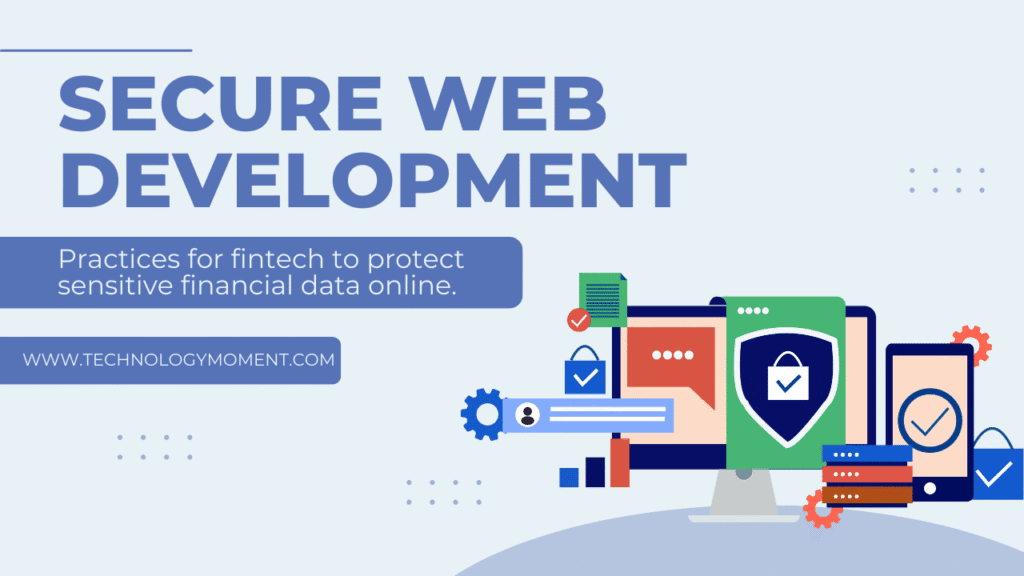

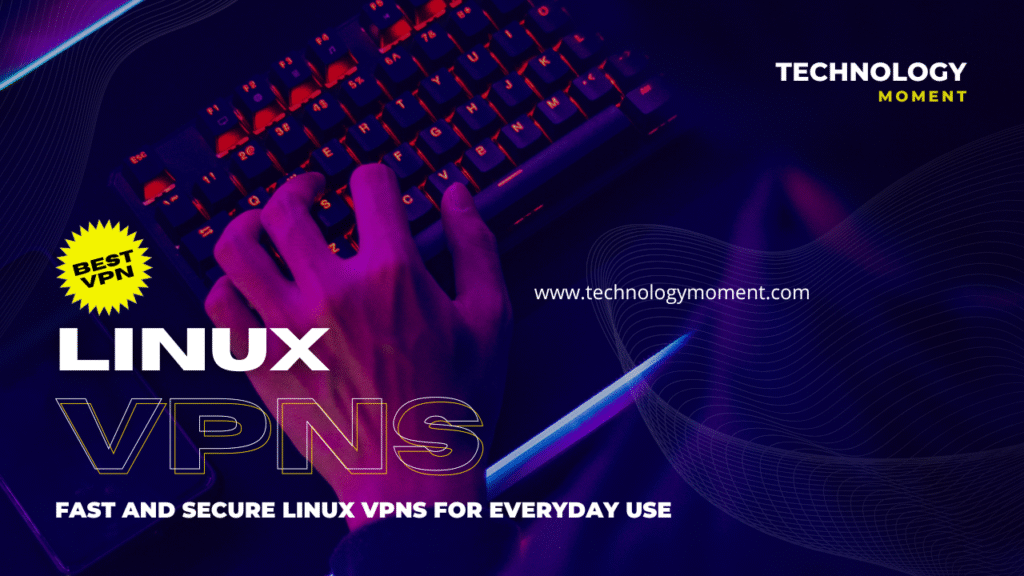

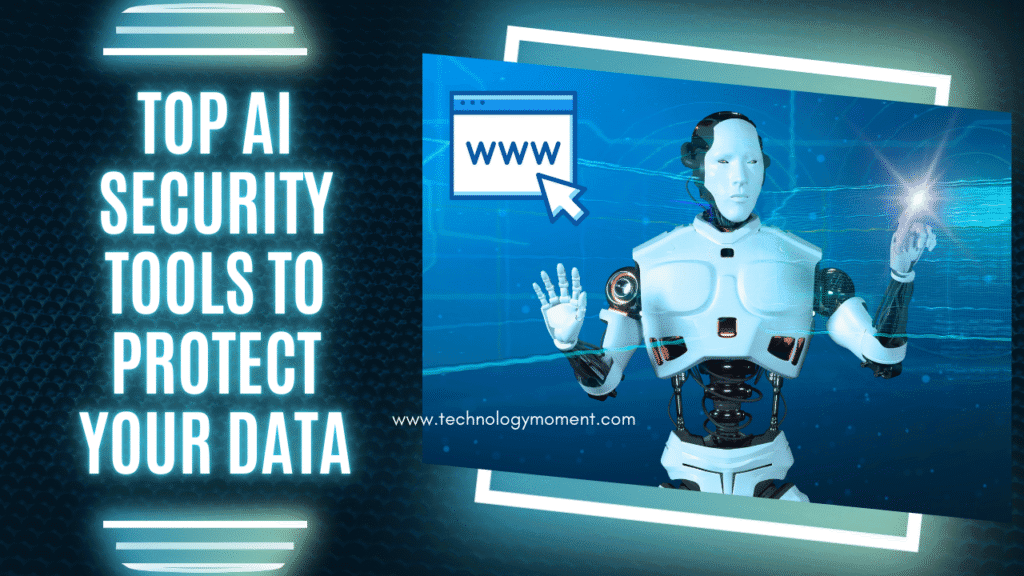





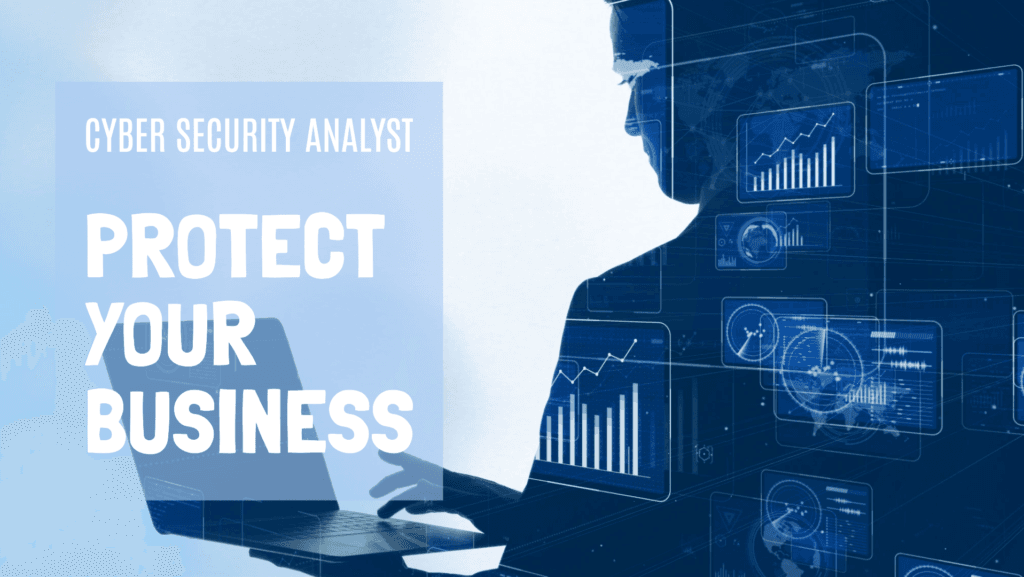
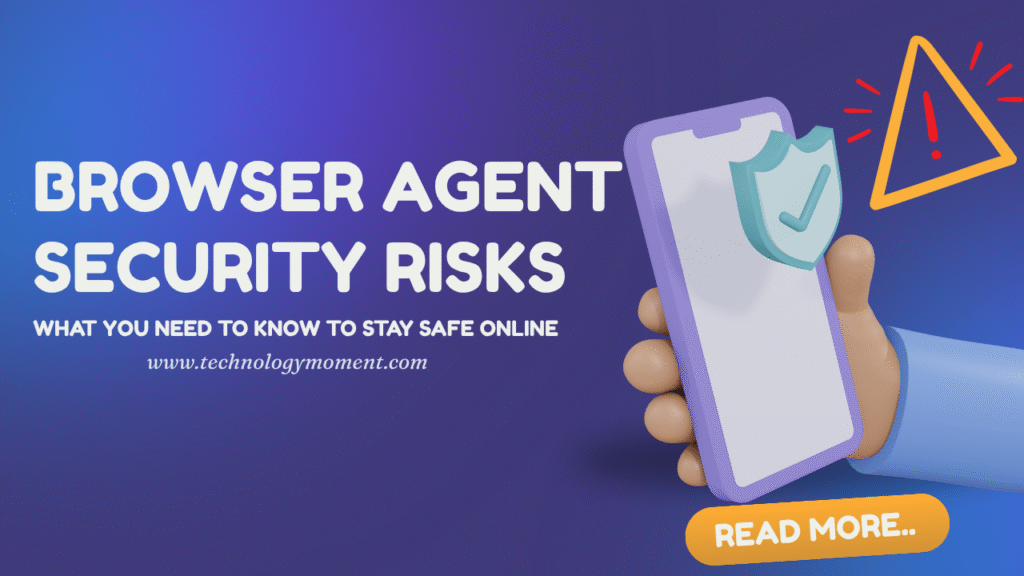

Great tips on staying safe online! I particularly appreciate the emphasis on using strong, unique passwords for each account. It’s such a simple yet effective way to enhance our cybersecurity!
Thank you for sharing these essential cybersecurity tips! I found the advice about enabling two-factor authentication especially helpful. It really adds an extra layer of protection!
This is a fantastic overview of online safety! I think it’s crucial that more people understand the importance of being cautious with public Wi-Fi networks. Your suggestions are spot on!
I love how you broke down these cybersecurity tips into manageable steps! The reminder to regularly update software and apps is so important but often overlooked.
These tips are incredibly useful, especially for those who might not be tech-savvy! It’s great to see such practical advice that anyone can follow to stay safe online.